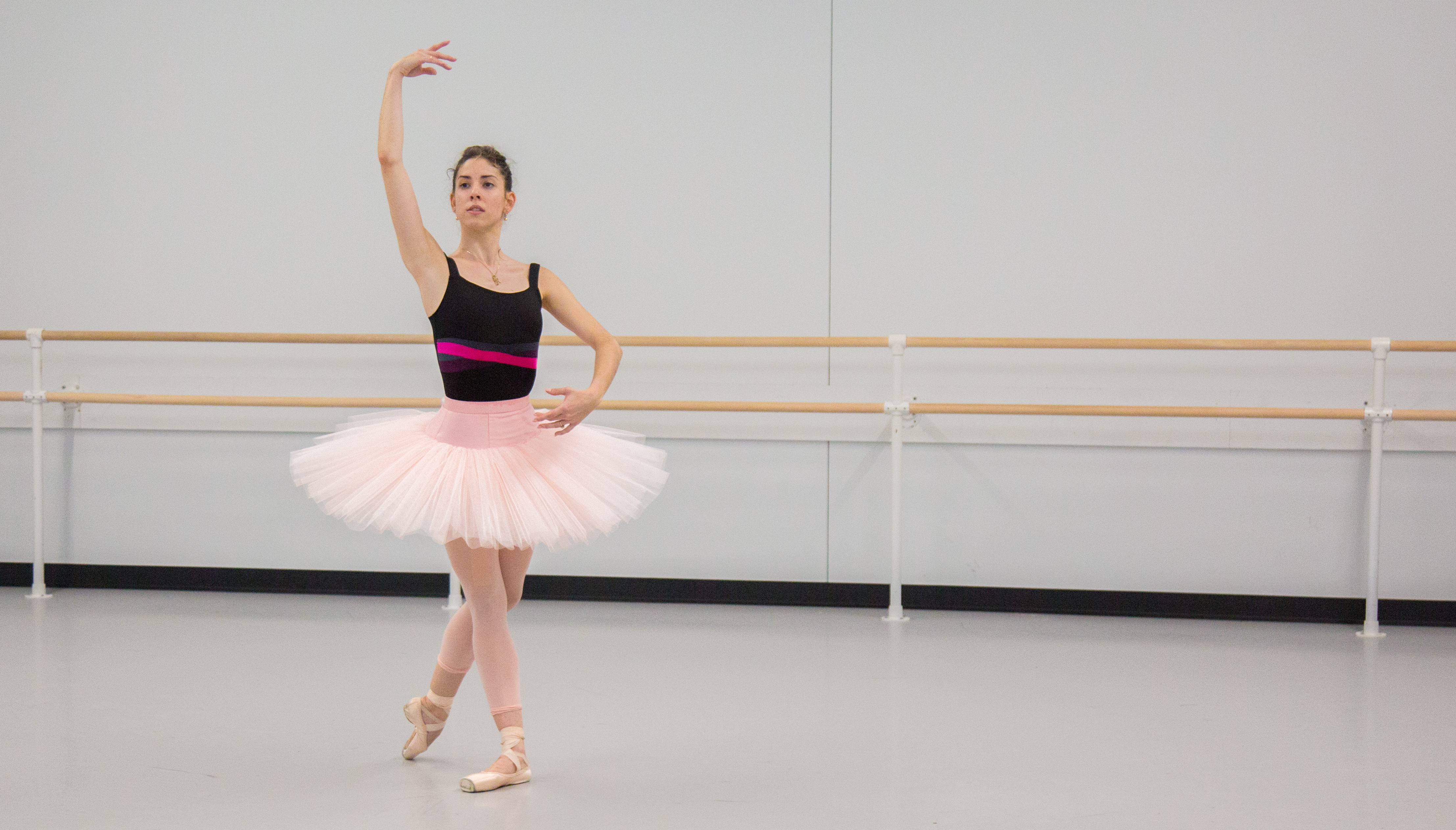
The Cuban Sleeping Beauty
Dayesi Torriente, a Cuban and United States prima ballerina, will be starring in the role of Princess Aurora for The Pennsylvania Ballet’s “Sleeping Beauty”…
Arabesque, chassé, chassé, chassé, coupé, pas de bourre, grand jeté… The baroque princess is doted upon by her suitors at court, gleefully waltzing through the crowd of awed townsfolk and lovestruck princes, presented with flower garlands as she nimbly piqués with a delighted smile across her face. All at once, a shrouded figure presents another garland to the princess, but this one comes with an object hidden within that has been banned from her kingdom: a spindle. She curiously inspects the sharp needle, and blood is drawn from her graceful fingertips. The pace slowly changes as the enthused naivete of the princess begins to wane, she begins to pirouette on relevé, her face attempting to express a look of being okay to convince herself and her audience that nothing's the matter, but as Peter Ilyich Tchaikovsky’s score adaggios into the sound of desperation and panic, Aurora swoons and collapses. She is, after that First Act, officially La Belle au bois dormant.
Clap, clap, clap. The princess is suddenly awoken by the Assistant Artistic Director & Interim Principal of The School of Pennsylvania Ballet. Samantha Dunster breaks the princess out of her spell, and we are left in a stark rehearsal room with Dayesi Torriente, catching her breath and smoothing out the muscles pulsing with pain on her quads. The innocence of a sixteen year old Little Briar Rose drips off of Torriente’s face, as she intensely focuses on Samantha’s direction.
After sitting in on a rehearsal for the Cuban prima ballerina’s break-out soloist role in “Sleeping Beauty”, it is obvious that the duties and obligations of a princess extend far beyond plastering a grin and spritely moving across the stage like pointe-shoe pink petals caught in a gentle gust of April wind. Beyond creating the illusion of fairy-tale mysticism for those who will be reeled into the magic of the show at The Academy of Music from October 12th to October 22nd, Torriente had to blister her toes on rubber slabs and remember to elongate her arms for years prior to being crowned as principal ballerina.
Torriente began her career at the age of five in Havana, Cuba, after a neighbor and friend of her mother’s saw that she had the “conditions and attitudes” to dance ballet. She went through her elementary formation as a dancer at Alejo Carpentier's school on “19th and L” in El Vedado in 2000, and in 2009 went onwards to graduate with “gold honors” at the prestigious Escuela Nacional de Ballet, highly-regarded as one of the best and largest ballet schools in the world. From there, under the direction of none other than prima ballerina assoluta and artistic choreographer Alicia Alonso, Torriente chasséd in a tutu across stages in Mexico, South Africa, Italy, Canada, Brazil, China, and Colombia.
“The world of ballet is, in reality, incredibly difficult”, Torriente reflects, and in Cuba, it is perhaps even more difficult given the amount of competition to rise to the top of the ranks and join the most prolific dance companies in the island. Some of the most notable dancers in the world come from Cuba, such as Carlos Acosta and Rolando Sarabia. Torriente’s take on that constant flow of talent? Schooling, discipline, and interest: “We have marvelous schools in Cuba, providing an excellent formation with magnificent teachers, and the culture surrounding ballet is simply massive… There are so many boys and girls studying ballet professionally. The level of ballet in Cuba is quite high, so many children grow up dreaming to become dancers.”
However, after ascending to the sought-for rank of principal ballerina in the national ballet in 2015, Torriente decided that it was time to experiment with other levels of ballet, other choreographers, dance different things. A mixture of fate and ambition brought Torriente to Pennsylvania Ballet. Her boyfriend, Arian Molina Saca (whom she met while dancing in Cuba), received a call from madrileño Ángel Corella- the Ruth & A. Morris Williams Jr. Artistic Director of The School of Pennsylvania Ballet -and shortly followed Arian's steps to settling down in Philadelphia.
“At first, it was a struggle. Now I am so happy, but before it was tough starting out as an immigrant. The hardest part is the language. You have to learn, little by little, and eventually go on to begin speaking it and understanding it. It was difficult to leave my family and my friends behind, my customs, my language, and having to adapt to something entirely new. I am grateful that here [at the dance company] they are very welcoming and try to accommodate us. My boyfriend and I only know many one or two other Cuban couples in Philadelphia, so I appreciate the hospitality,” Torriente effuses.
RELATED CONTENT
That hospitality comes in the form of Dunster instructing Torriente in nearly-flawless Spanish, translating for Maggie (the pianist) what Torriente’s needs are, so that the dynamic between the three flows without missing a beat.
Perhaps that amiable camaraderie and willingness to help one-another is how Torriente- in less than a year -was promoted to principal ballerina for The Pennsylvania Ballet, but much of her success (which she humbly denies) must be attributed to her years of hard-work and dedication, the sweat and the shin splints that are hidden underneath a delicate glittering tiara and an intricately designed leotard. “To be a ballerina”, Torriente declares, “you must do your best and give your best in everything that you do. There is no such thing as a ‘small role’; whatever you do, you must do it at your maximum capacity. You give it your all, and at that final curtain call, the public will see it, your teachers will recognize your efforts, and you will feel at your best. When I dance, I always try to be the best version of myself.”
Torriente’s habits have clearly been effective. In Cuba, she was a soloist in “Coppélia”, and now will perform the role of Aurora in select performances of “Sleeping Beauty” this upcoming autumn. Although the opening night is weeks away, the dancers at The Pennsylvania Ballet are already busily preparing and sharpening their tendus, rehearsing most weekdays from 10am to 6pm.
Torriente already has experience with Tchaikovsky’s masterpiece, given that she played the role of the “Lilac Fairy” in the Cuban National Ballet’s rendition of the fairytale, and “knows the story well”, but that still does not eliminate the fact that, as far as technique, “Sleeping Beauty” is actually one of the most difficult ballets for female leads, and the ballet itself- with a prologue, three acts, and a finale -is rather exhausting.
Torriente feels honored to take-on the responsibility of being the face of the young slumbering beauty, and, even though her hometown of Havana is miles apart (and sometimes worlds away) from Philadelphia, she is “excited to learn more” here and “truly loves the challenge”. She hopes that, one day, the relations between Cuba and The United States will become more normalized so that dancers from both countries can learn from one another and enrich their formation as dancers- and generally as persons -through cultural and artistic exchange.
You can purchase tickets to “Sleeping Beauty” at The Pennsylvania Ballet’s website. And, when you’re not staring at Torriente’s lithe movements fit for a princess, you may bump into her and her boyfriend eating at Cuba Libre or Alma de Cuba which they both said with a smile, “is exquisite”.











LEAVE A COMMENT: